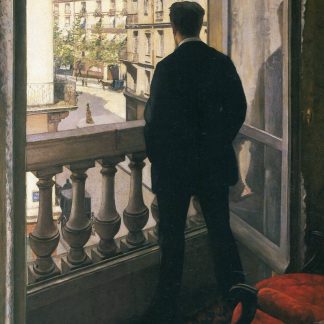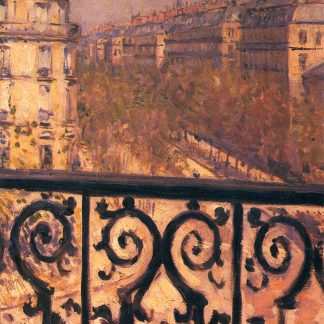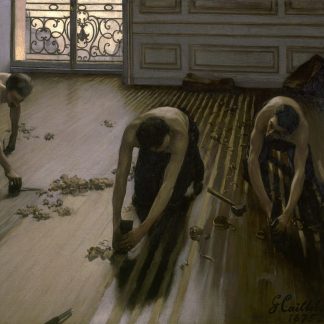Description
Caillebotte’s originality lays in his attempt to combine the careful drawing, modeling and exact tonal values encouraged by the Académie with vivid colors, bold perspectives, keen sense of natural light and modern subject matter of the Impressionist movement. Painted in 1875, this work illustrates Caillebotte’s continued interest in perspective and everyday life. In the scene, the observer stands above three workers on hands and knees, scraping a wooden floor in a bourgeois apartment—now believed to be Caillebotte’s own studio at 77, rue de Miromesnil, in the 8th arrondissement of Paris. A window on the back wall admits natural light. The workers are all shown with nude torsos and tilted heads, suggesting a conversation. Caillebotte’s interest in the male nude, set in a modern context, has been linked to his presumed homosexuality, however it was part of a larger trend, not necessarily limited to homosexual artists, that was first introduced by Courbet in a painting of two wrestlers. This is one of the first paintings to feature the urban working class. It reintroduces the subject of the male nude in the painting, but in a strikingly updated form. Instead of the heroes of antiquity, here are the heroes of modern life—sinewy and strong—in stooped poses that would appear demeaning if they did not convey a sense of masculine strength and honest labor. There is a motif of curls in the image, from the wood shavings on the floor, to the pattern of ironwork in the window grill to the arched backs and arms of the workers. The repetition in the image, with the three workers engaged in different aspects of the same activity but having similar poses, is similar to works by Caillebotte’s contemporary, Edgar Degas.
Bibliography
Les raboteurs de parquet, https://en.wikipedia.org/w/index.php?title=Les_raboteurs_de_parquet&oldid=1067149739 (last visited Aug. 10, 2022).






